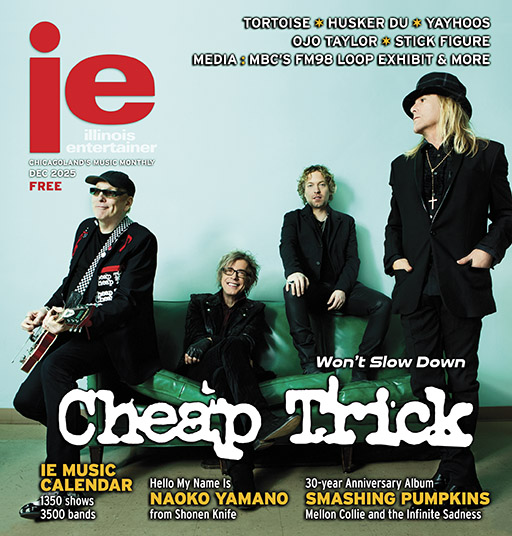Media: June 2012

After nearly a year without a commercial alternative-rock station, Chicago has now has two — both of which pay homage to the old Q101: WKQX-LP on 87.7-FM and Q101 on WJJG-AM (1530).
Last July, Merlin Media dumped Chicago’s modern-rock station, WKQX-FM (101.1), in favor of a young-skewing FM news format. In June, Merlin jettisoned the smooth-jazz station at 87.7 in favor of resurrecting the same alt-rock format it killed 10 months earlier. (Merlin launched a digital smooth jazz station on 97.9 HD-3; WKQX can also be heard at 101.1-FM HD3).
“Underground Alternative” WKQX-LP is run by Merlin , which is headed by Randy Michaels — who oversaw some unpopular changes at WGN-AM (720) when he was chief executive at the Tribune Co. Merlin, which also owns WLUP-FM (97.9), runs 87.7 under a marketing agreement with Technologies Group LLC (which retains the license). But the station may not last long; 87.7 is actually a low-power television station (Channel 6) that must convert to digital after 2015 in order to comply with FCC requirements.
Merlin Media Operations manager Jim Richards says the new WKQX would not be a clone of the old one. “The thing that we have in common is the call letters. But it’s a brand new, reimagination of the format — kind of like Batman and Spiderman, when those franchises get reborn.”
An hour before the new WKQX debuted, local-radio entrepreneurs Mike Noonan and Matt Dubiel launched Q101.com on Elmhurst’s WJJG-AM (1530). Their syndication company, Broadcast Barter Radio Networks, purchased the Q101 brand last July and turned it into a virtual “station” via website and app. DuBiel is general manager at WJJG, which had been airing syndicated talk shows — including Mancow in the morning, which still airs (just like old times).
When asked if flipping WJJG to alt-rock was a stunt or a permanent move, DuBiel said, “Q101 has as much chance of being on 1530-AM this time next year as FM news does being on 101.1 at this time next year. Currently, Q101 has more people listening online than Arbitron claims are listening to FM News on radio, so our chances may be even better. In fact, since WKQX is low power, chances are Q101 will be alive and kicking well after FM News and 87.7 are long gone.”
Asked whether WKQX would be around in five years, Richards joked, “If the Mayans have anything to do with it, we’ll all be gone.”
In its first days, the station aired promos warning listeners not to let others in on the secret, or they’d be taken off the air again — a strange irony considering that the company that killed off WKQX is the same one that revived it. “The important thing is that it’s back,” Richards said.
At press time, it was undetermined whether there would be a local music show, although Richards promised that the station would connect with local bands. As for sponsoring shows, “We definitely plan to create events where we can bring in a large group of our listeners and introduce them to our clients’ products and services.”
Noonan said that Q101.com has always had a strong focus on local music, and continues to sponsor concerts. Last month, he and DuBiel raised $77,000 to put on a Jamboree concert via a Kickstarter campaign — falling short of their $299,000 goal. “[Seventy-seven thousand] is an unbelievable testament to the passion and love fans have for Q101,” he says, especially when the fans didn’t know the venue or band lineup.
He continued, “If we decide to have sponsors underwrite this event, they’ll be able to see that interest in Jamboree is not only high, but fans are willing to get on board and support it.”
ODDS ‘N’ SODS: The first local station on the Q bandwagon was actually suburban classic rocker WRXQ-FM, which rebranded itself “Q Rock 100.7” on May 1st . . . On World Press Freedom Day (May 3rd), the bodies of three journalists were pulled from a canal behind a sewage plant near the cartel-plagued Mexican port city of Veracruz — all had been tortured. One week earlier, Regina Martínez Pérez, a reporter for an investigative news magazine, was found beaten and strangled in her home in the same state; the four were among the few journalists still working on crime-related stories in the area. Mexico’s National Human Rights Commission reports that 75 media workers have been killed in Mexico since 2000. While the Committee To Protect Journalists puts the figure at 51, the consensus is that the attacks escalated after President Felipe Calderon took power in 2006 and launched a military crackdown on drug cartels. Today, self-censorship is the norm, with most media hardly covering the latest murders. “Vast self-censorship has taken hold as a result, prompting numerous news outlets to abandon coverage of crime and corruption,” writes the Committee To Protect Journalists in its 2012 Impunity Index. “Journalists and citizens have turned to social media to exchange news of criminal activities — only to find peril there as well.” More at cpj.org.
— Cara Jepsen











